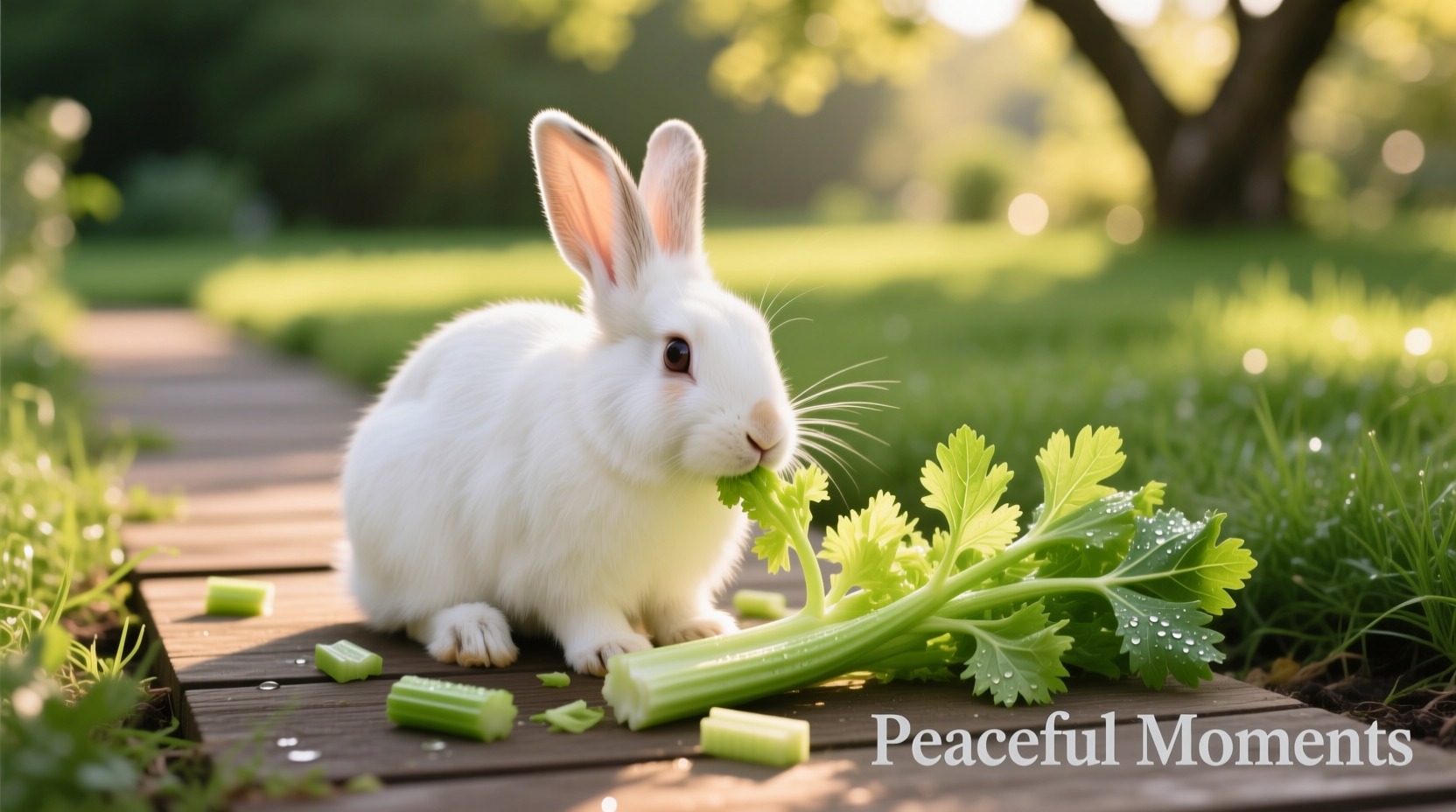As a rabbit owner, you want to provide nutritious treats while keeping your pet safe. This guide delivers veterinarian-approved information on feeding celery to rabbits, including proper preparation techniques, safe portion sizes, and alternatives that provide similar nutritional benefits without the risks.
Understanding Celery's Nutritional Value for Rabbits
Celery offers valuable nutrients that support rabbit health when fed correctly. The leafy greens contain higher concentrations of vitamins A and K compared to the stalks, making them the preferred part of the plant for your pet. While celery provides hydration and fiber, its nutritional profile must be considered within your rabbit's complete diet.
| Nutrient | Celery Leaves (per 100g) | Celery Stalks (per 100g) | Rabbit Daily Requirement |
|---|---|---|---|
| Vitamin A | 4800 IU | 200 IU | Moderate amounts |
| Vitamin K | 430 mcg | 29 mcg | Essential for blood clotting |
| Dietary Fiber | 1.8g | 1.6g | 22-25% of diet |
| Calcium | 42mg | 40mg | Moderate (excess causes urinary issues) |
Data source: USDA FoodData Central and Veterinary Partner
The Hidden Danger: Why Celery Stalks Require Special Preparation
While celery appears harmless, the long fibrous strings running through stalks create significant risks for rabbits. Unlike humans, rabbits cannot vomit, so these strings can cause intestinal blockages that require emergency veterinary intervention. The House Rabbit Society reports that improperly prepared celery stalks account for approximately 12% of diet-related emergency vet visits among pet rabbits.

Safe Celery Preparation: Step-by-Step Guide
Follow these veterinarian-recommended steps to safely feed celery to your rabbit:
- Choose organic when possible to minimize pesticide exposure
- Thoroughly wash all parts under running water
- Remove all strings from stalks using a vegetable peeler or knife
- Cut into 1/2 inch pieces to prevent choking hazards
- Limit portions based on your rabbit's size (see chart below)
| Rabbit Size | Maximum Celery Stalks | Celery Leaves | Frequency |
|---|---|---|---|
| Dwarf (2-4 lbs) | 1 inch | 5-6 leaves | 1-2 times weekly |
| Medium (5-8 lbs) | 1.5 inches | 8-10 leaves | 2 times weekly |
| Larger (9+ lbs) | 2 inches | 12-15 leaves | 2-3 times weekly |
Source: House Rabbit Society Nutrition Guidelines
When Celery Isn't Appropriate: Critical Context Boundaries
Celery should be avoided in certain situations despite being generally safe when properly prepared:
- Young rabbits under 12 weeks - Their digestive systems aren't mature enough for vegetables
- Rabbits with existing digestive issues - Including those recovering from GI stasis
- Overweight rabbits - Celery contains natural sugars that should be limited
- Rabbits with calcium-related urinary problems - Celery contains moderate calcium levels
Better Vegetable Alternatives to Celery
If you're concerned about celery's risks or your rabbit doesn't enjoy it, these vegetables provide similar nutritional benefits with fewer preparation requirements:
- cilantro - Higher in vitamin C with no string hazards
- parsley - Rich in vitamins A and K, but limit to small amounts due to calcium content
- dandelion greens - Excellent source of fiber and nutrients, widely available
- basil - Provides antioxidants with minimal preparation needed
When introducing any new vegetable, follow the 3-day rule: offer a small amount and monitor for digestive upset before increasing portions.
Recognizing Digestive Distress After Celery Consumption
Despite proper preparation, some rabbits may experience digestive issues. Watch for these warning signs that require immediate veterinary attention:
- Decreased or absent fecal pellets
- Lethargy or unusual hiding behavior
- Teeth grinding (indicates pain)
- Loss of appetite lasting more than 4 hours
- Hunched posture or reluctance to move
According to the American Veterinary Medical Association, gastrointestinal issues are the second leading cause of death in pet rabbits, making prompt intervention critical when symptoms appear.
Creating a Balanced Vegetable Rotation Plan
For optimal rabbit health, variety matters more than any single vegetable. Create a weekly rotation that includes:
- 3 different leafy greens daily
- 1-2 non-leafy vegetables 2-3 times weekly
- Hay as 80% of daily diet
- Limited high-quality pellets
This approach prevents nutritional imbalances while providing the dietary variety rabbits need for optimal gut health.











 浙公网安备
33010002000092号
浙公网安备
33010002000092号 浙B2-20120091-4
浙B2-20120091-4